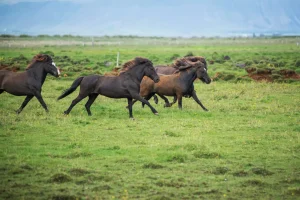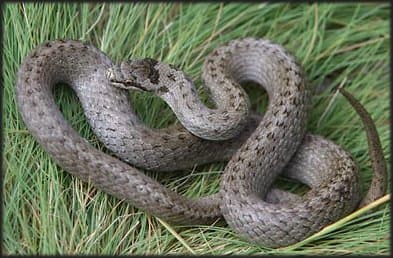Smooth Snake Fact File
The
Smooth snake fact file
Smooth Snake
- Common name – smooth snake
- Scientific name – coronella austriaca
- Size – a typical adult will be between 40 and 60cm long
- Identification tips – body colour varies between silvery-grey and a gingery-brown, with a mottled black pattern running the entire length of the body. At first glance, smooth snakes can be confused with adders because of this, but a smooth snake has a more slender build. The top of the head is often a darker shade to the body, and a black stripe running across each eye is often present.
- Preferred habitat – light, sandy heathlands are the preferred choice but smooth snakes will also readily live in areas of dense undergrowth.
- Diet – surprisingly, smooth snakes prey primarily on other snakes and lizards. The rare sand lizard is a favourite, particularly because they share the same habitat. Small mammals, rodents and baby birds are also taken, as are larger insect and frogs. A smooth snake has no venom, but strikes its prey and then subdues it by wrapping its body tightly around the prey before consumption.
- Breeding – mating occurs in late spring, around May, and give birth to up to 15 young in late August/September.
- Other points – smooth snakes are extremely secretive and spend a large proportion of their lives in sandy burrows just beneath the surface. For this reason, it’s very rare to see one – even in habitats where they are known to exist.
The sandy heathlands of the New Forest are an ideal habitat for them, and one of only several places in the UK that they can be found.
Related Pages:

Why Time in Nature Complements Daily Astrological Guidance
Many of us start the morning with a quick look at our horoscope. A few lines can help name our mood, highlight a tension, or point out an opening in the day. What often gets

UK’s best natural spots
Wilderness escapes are not for everyone, that’s for sure. Some people simply prefer holidays where they can lounge all day and take it easy instead of being active, going hiking, swimming, or cycling. But there

Tech Hacks for Exploring the New Forest National Park
The New Forest National Park in the UK is one of Britain’s most enchanting natural destinations. Covering ancient woodlands, open heathlands, and winding walking trails, it offers visitors a chance to step back in time

The Benefits of Outdoor Life for Horses
Life outdoors shapes stronger, healthier horses. Sunlight fuels the body with vitamin D, which helps bones grow dense and resilient. Space allows movement that stables cannot match. A horse stretching into stride, breathing clean air,

New Forest Getaway
The New Forest in southern England is unlike anywhere else, one moment you’re on a country lane, the next you’re face to face with a pony blocking traffic. Villages with thatched roofs appear out of

How Satellite Imagery is Transforming Wildlife Conservation
Today, a myriad of species and their habitats are struggling to survive and are on the verge of extinction due to permanent pressure on deforestation, climate change, and unlawful activities like illegal mining and logging.

